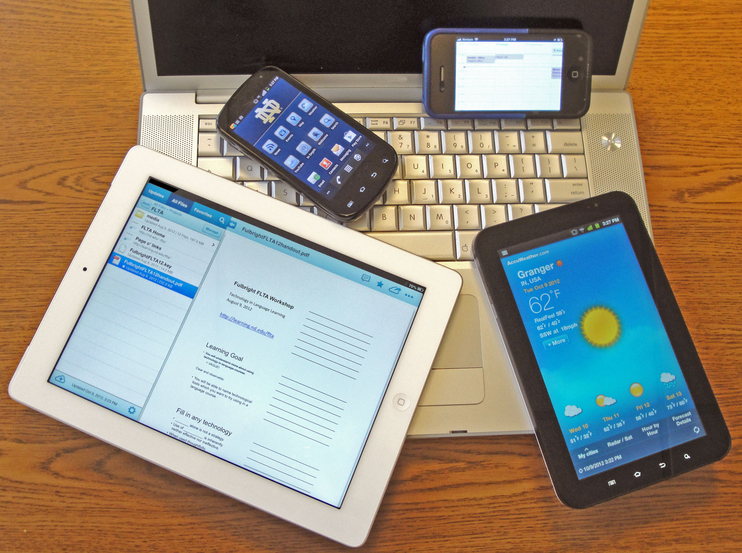New data suggests that when it comes to smartphones, size matters. The demand for big-screen devices is soaring, and doesn’t show signs of slowing up anytime soon. According to a recent study, worldwide shipments of smartphones with five-inch screens or bigger rose 369 percent in the first three months of this year. More than three of every 10 smartphones shipped now has a big screen, said market research firm Canalys.
The History of Big-Screen Smartphones
Samsung, the number one phone maker in the world, corners the market with 44 percent share of devices with screens five inches or more. The company, along with Sony and Chinese manufacturers Huawei and ZTE, introduced big-screen smartphones — from five diagonal inches to more than seven inches — earlier this year at the Mobile World Congress trade show in Barcelona.
Bigger screens make for a more vivid and appealing photo and video experience. Software has improved considerably, and data network speeds have increased, so smartphone users naturally desire a big screen to watch videos and flip through photos.
Also, big-screen smartphones support handwriting, drawing and note-sharing capabilities much better than a normal-sized smartphone. For example, a New York Times article reported that some Asian-language speaking users prefer to write characters on their smartphone screen with a pen, rather than typing on the keyboard. In addition, aging adults with declining vision and less-dexterous fingers can also benefit from a larger screen.
Research market firm IDC projects that the number of smartphones shipped worldwide will rapidly rise. In fact, they believe that half of all smartphones shipped with have large screens by 2017. Consumers are already choosing to buy a smartphone with a large screen instead of a small tablet in certain markets.
For consumers buying a Huawei device, there’s barely any difference. Huawei released the MediaPad X1, a smartphone with a seven-inch screen, which is typically a screen size used for tablets. The company is branding the device as a “phablet,” or a tablet with a phone connection.
The Most Popular Big-Screen Phones
So far this year, Samsung smartphones have been some of the most popular big-screen devices. The Galaxy Note 3 is extremely popular, with a 5.95-inch, high-resolution display. Samsung also offers the Galaxy S4 and S5, which both feature a 13-megapixel camera. With carriers like T-Mobile offering these Samsung smartphones at $0 upfront without a contract, it’s no surprise why these devices dominated the market.
Jessica Kee of Canalys predicted that Apple would soon add its own offering to the mix. “Apple plainly needs a larger-screen smartphone to remain competitive, and it will look to address this in the coming months,” she said.
Laurence Isaac Balter, a chief market strategist at Oracle Investment Research, agreed. He told the New York Times that it’s silly to walk around with an iPad Mini and an iPhone. “In the end the manufacturer that delivers the one device that does it all will be the winner,” Balter said.
Big-screen smartphones are clearly on the rise. With the demand growing, more manufacturers are sure to compete for a piece of the market.
– By Jennifer Thayer
 Jennifer Thayer is a technology writer who enjoys writing about gadgets, apps and the latest tech news. Follow her on Twitter.
Jennifer Thayer is a technology writer who enjoys writing about gadgets, apps and the latest tech news. Follow her on Twitter.












Leave A Comment
You must be logged in to post a comment.